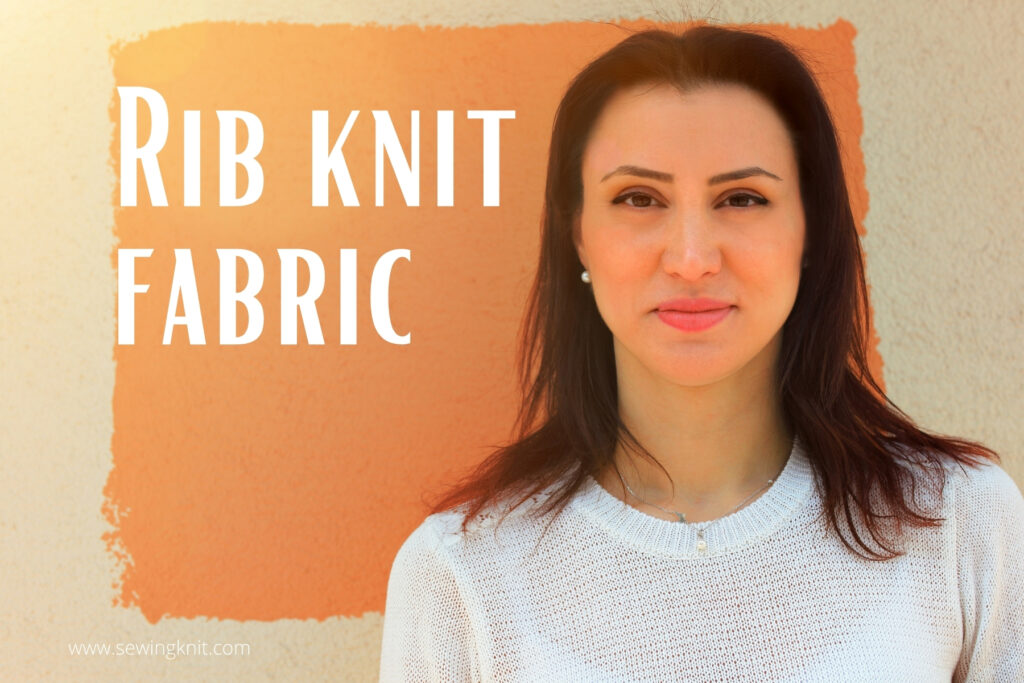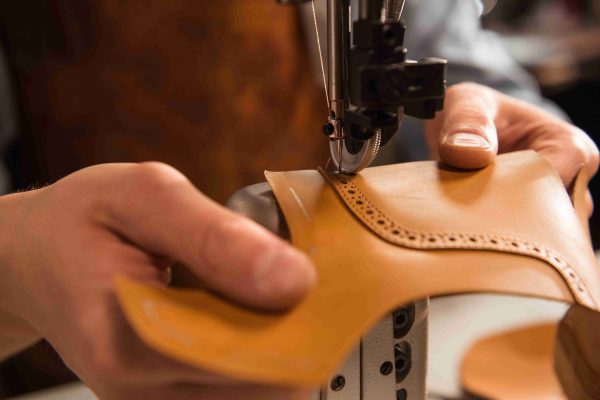
Knitting has developed in Egypt between 500 and 1200 A.D., according to historian Richard Rutt. Rib knit is a knitted fabric having raised and lowered rows that alternate. They’re more elastic and durable than plain knits. They’re commonly used in T-shirts, as well as for socks, sleeves, waist, and collar trimmings.
Overview of Rib Knit
Ribbed knits feature seams or continuous rows of stitches. These form ridges on both the front and back of the fabric, giving it a uniform appearance on both sides. Ribbed knits are generally made of 100% cotton. Yet they can also contain spandex and other fabric mixes. They have a natural elasticity, making them ideal for cuffs, bands, and neck bands Rib knits are very popular in specific garments, baby clothes, shirts, and skirts.
A Deeper Look
The rib seams or straight ridges of stitches alternately intermesh on the face and back of the cloth, in this double-knit textile. Rib knit textiles, particularly in the breadth, provide good flexibility and form maintenance.
A fundamental technique used in weft knitting. The method requires two sets of needles to operate perpendicularly to one another on the sewing machine. The knitted fabric can be used for comprehensive outfits as well as specific applications. Examples include shoulder bands, collar bands, and cardigan waistbands. As well as unique trimmings to be used with other knit or woven materials. Rib knit sweaters are thin and have a tight, body-hugging shape.
Cloth Type
Rib knit is a form of woven fabric with parallel textured lines. The pattern is created using two needles. The vertical ridges are made up of a specific figure of knit stitches that are more visible. They contain a certain number of reverse stitches that also form the seam between the ribs. These are replicated numerous times over the fabric’s breadth.
You may have different rib knit textiles based according to how many knits and purls you have. A 2×2 rib knit is made up of 2 knits and 2 purls in a row.
Usage
- Rib Knit Materials are commonly utilized for cuffs, neckbands, and waistbands, as well as any other form-fitting edge. Rib Knit Fabric, is the greatest option for knitwear manufacture. Knitwear manufacturing might be avoided by stitching a rib knit cloth rather than knitting knitwear. Linen, cotton blends, wool, and acrylic are the most common materials used in rib knit textiles.
- Rib knits include the specific traits:
- It has a lot of diagonal stretches, vertical rows even with no spandex, and it typically rebounds rather well after being stretched.
- The proper and improper sides are comparable, but they’re not the same: You may use either side as your right side but pick one and stay with it.
- It’s firmer and less smooth than jersey.
- Its borders don’t curl like a jersey when tugged, and it fits the body wonderfully, emphasizing contours and curves.
How to identify a rib knit fabric?
A 1×1 rib, usually a plain rib, is created in the stitching procedure when every wale rotates among simple and purl stitches on the right and back sides. A 2×2, also known as Swiss rib, is made by exchanging every two wales of regular stitching on its front side on every two rows of purl stitches on the inner surface. A 6×2 rib is made by alternating 6 wales of simple stitching on the right side with 2 wales of reverse stitching on the rear portion.
Stretch the material crosswise to observe the appearances of alternate sections of simple and purl stitching in the longitudinally, or wale, the orientation of the rib knit fabric to distinguish rib knit textiles, notably once they are firmly knit with delicate yarns. The high ridges are simple to stitch wales, while the lower sections are cross-stitching Wales.
Sewing with Rib Knit Fabric
- This is how to make an article of clothing from knit fabric using a standard sewing machine using life hacks.
- First and foremost, a specific needle – a ballpoint – will be required. The issue is that using a normal needle will result in holes in your knit fabric. When stitching with knit materials, a double or twin needle is the best option.
- Make use of your walking foot. The sewing machine will only draw the bottom layer of cloth if this mechanism is not used. The Walking Foot pulls both the top and bottom layers of cloth.
- Cut a horizontal plane. All of the materials must be trimmed without dangling borders on a surface or the ground. Knit materials stretch, so keep that in mind. It’s easier to make a blunder when the borders are dangling.
- Knit in a zig-zag pattern. While stitching knitwear seams, a zig-zag stitch is highly suggested since, unlike with a plain stitching, it expands with the garment.
- To keep the material from stretching, use tissue paper to join the corners when stitching them together. When stitching two layers of knit fabric, tissue paper is placed beneath the seam (or on top) and removed once the operation is completed.
Frequently Asked Questions
What is the purpose of rib knit fabric?
Answer: Rib fabrics are needed for the “ribbing” that may be noticed mostly on lower edges of jumpers, wrist bands, and necklines. Rib knit cloth is created by crocheting yarns in one phase of the cloth using alternate knit and purl stitches.
Is rib knit a long-lasting fabric?
Answer: On both ends of the material, rib knits contain prominent longitudinal ribs created by successive wales. These knits are heavier than simple knits, have greater flexibility, and are therefore more resilient.
What is the process of making rib knit?
Answer: Weaving yarn as consecutive knit and purl stitches in one length of the cloth creates rib-knit fabric. Knit and purl stitches interchange in the fabric’s wales. It’s a reversible fabric since it looks the same on both ends. Both flat and circular knitting machines may be used to make these.
How can you know if a rib is a cloth or not?
Answer: Stretch the material lengthwise to observe the pattern of alternate rows of plain and purl threads in the longitudinally, or wale, the direction of the rib knit material to recognize rib knit textiles, particularly once they are densely knitted with fine fibers.
Final Words
Rub knit fabric is a versatile piece of clothing with a few usages. It is smooth with just the right amount of elasticity. You may take a little while to get a hold of it while sewing but with the right guidance and practice, you will be is safe hands.



One thought on “Rib Knit Fabric”
Comments are closed.